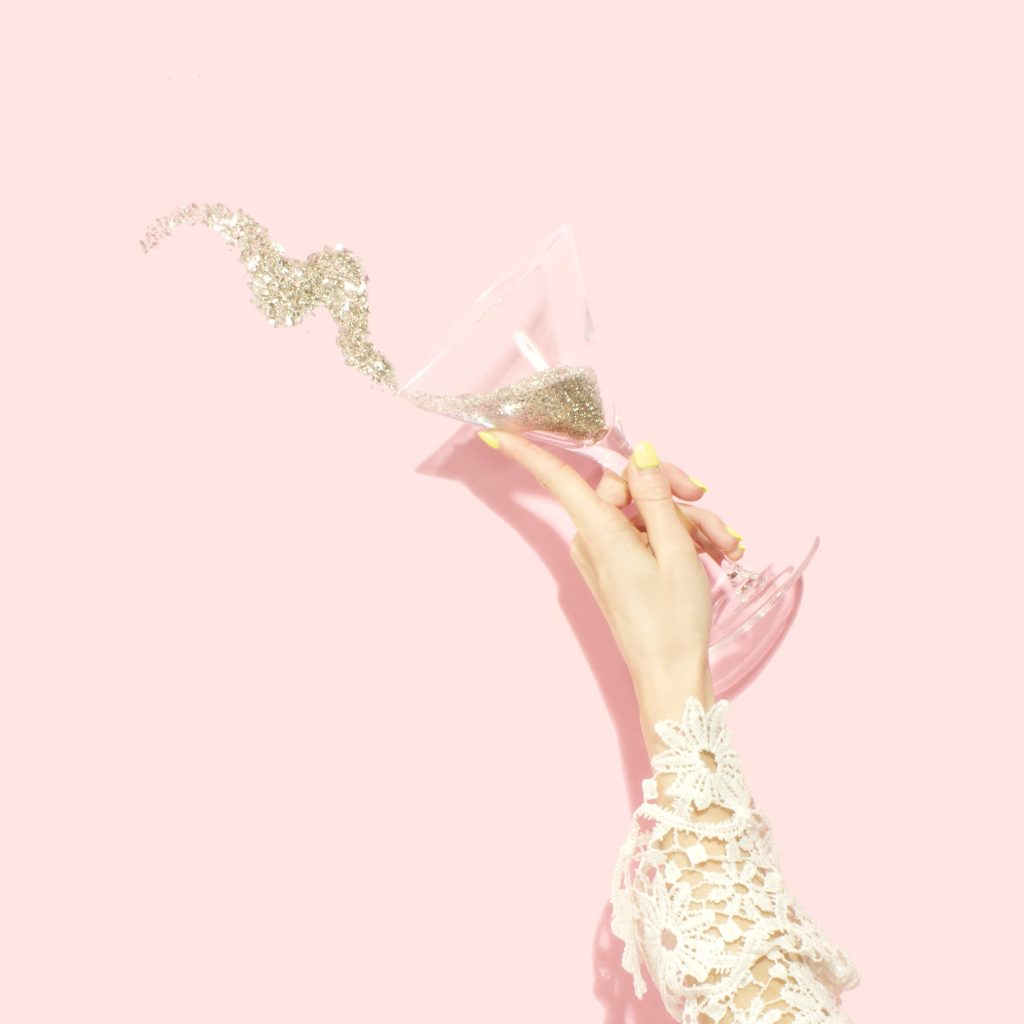
Whether you’re getting ready to host your next wine trivia night, or are just curious about the sparkles in your glass, here are 15 fun Champagne facts to pair with your next bottle of bubbles.
- 1. Champagne wine can only come from Champagne, France
- 2. International Champagne Day is the last Friday in October
- 3. Someone Who Collects Champagne Caps Is Called a Placomusophile
- 4. The Wire Cage on a Champagne Bottle Is Called a Muselet
- 5. ~20% of Champagne’s Bottle Cost Goes to Marketing
- 6. Champagne Grapes Must Be Hand Harvested
- 7. Champagne Is Almost Always a Blend
- 8. Grand Cru in Champagne Refers to an Entire Village, Not a Vineyard
- 9. The Comité Champagne Determines How Much Champagne Gets Made Every Year
- 10. The Chef de Cave Is One of the Most Important People in Champgne’s Winemaking Process
- 11. Champagne Corks Must Have the Word ‘Champagne’ Stamped on Them
- 12. 7 Grape Varieties Can Go Into Champagne
- 13. Champagne’s Max Alcohol Is 13% ABV
- 14. Champagne Has to Be at Least 15 Months Old to Sell
- 15. Most Champagne Houses Don’t Own Vineyards
- Thirsty for More?
1. Champagne wine can only come from Champagne, France
The European Union takes its trademarks seriously, and Champagne is a highly protected term under EU law. If your wine bottle has the word ‘Champagne’ on it, then it was made in the Champagne region of France.
Why is this important?
The Comité Champagne, a regulatory and marketing body for Champagne wines, works tirelessly to ensure that their producers have exclusive use of the word Champagne.
As a Champagne lover, you probably associate Champagne wines with aspiration, achievement, and celebration. THAT’s what they are protecting – this idea that their wines are unique symbols of special moments.
The Comité Champagne has an active brigade of attorneys that bring cease and desist orders against any and all who try to co-opt the name Champagne, and it’s not limited to wine –
Nail polish colors, body soap, paint colors – you name it.
Champagne can only come from Champagne, France!
2. International Champagne Day is the last Friday in October
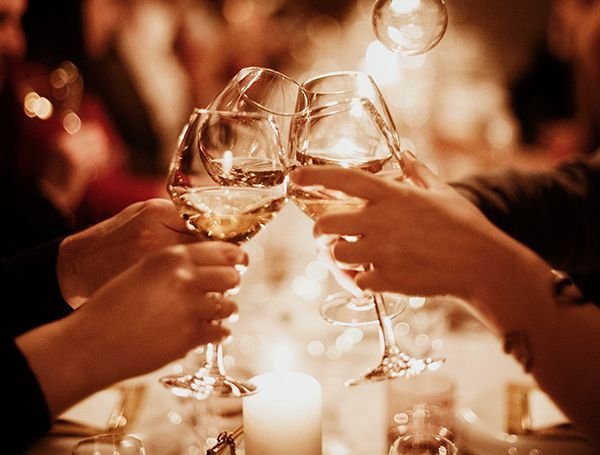
Get your bottle of bubbles ready! The Comité Champagne designated the last Friday in October as Champagne Day.
What better way to celebrate the end of fall and harvest season than some sparkles?
If you live in a large city, look for promotional events at your favorite restaurants and bottle shops.
These establishments will often have Champagne pairing demonstrations, Champagne appreciation classes, and discounts on Champagne wines.
3. Someone Who Collects Champagne Caps Is Called a Placomusophile
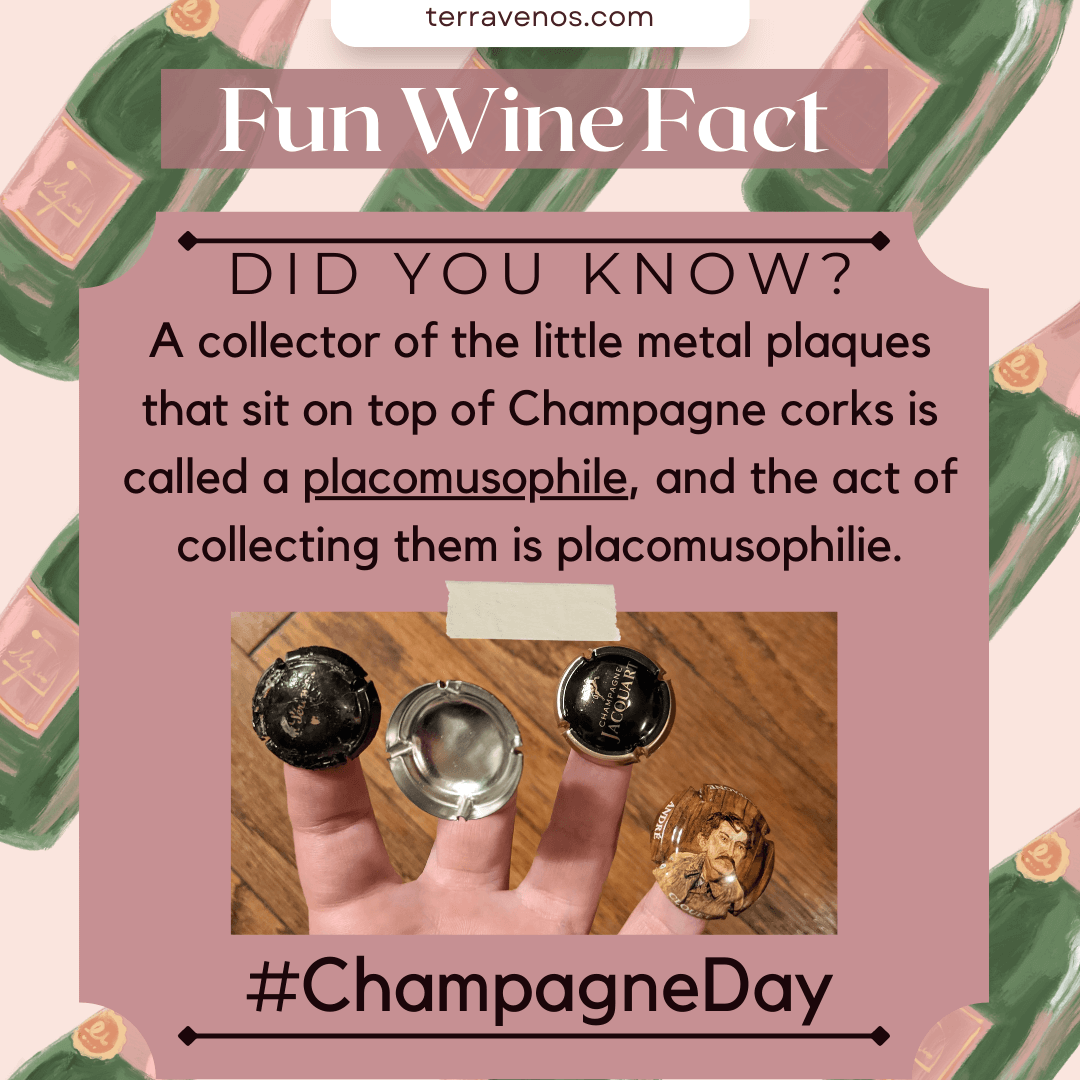
Champagne corks come topped with a little metal disk, called a cap. These caps can be plain or have the producer’s brand name on them.
Some are tiny works of art with intricate designs or images.
Naturally, people collect these little guys!
If you like collecting Champagne caps, then you’re officially a placomusophile.
(Full disclosure: I’m a proud placomusophile!)
4. The Wire Cage on a Champagne Bottle Is Called a Muselet
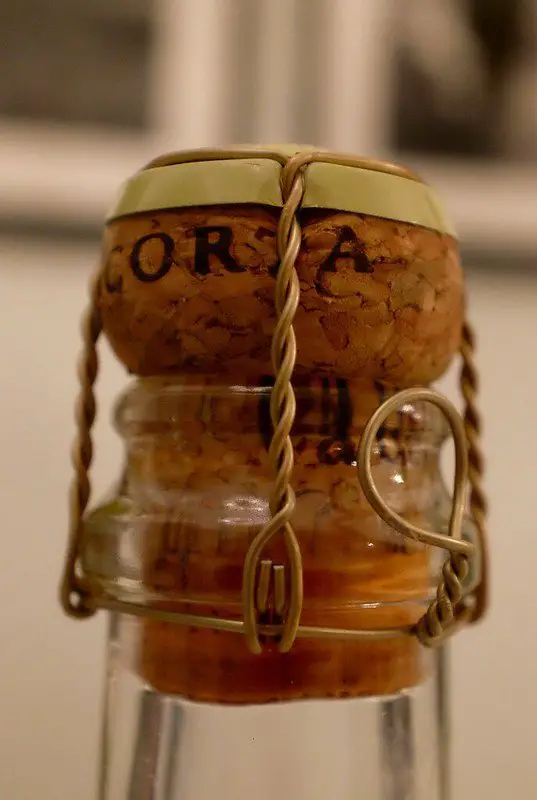
Pronounced muze-lay, the muselet has an important functional role in keeping you safe.
This cage keeps the cork, which is under tremendous pressure, firmly seated on the bottle until you’re ready to pop your bubbles open.
Bonus fun wine fact: The cage will have 6 twists to it.
Who knew? Now YOU do!
5. ~20% of Champagne’s Bottle Cost Goes to Marketing
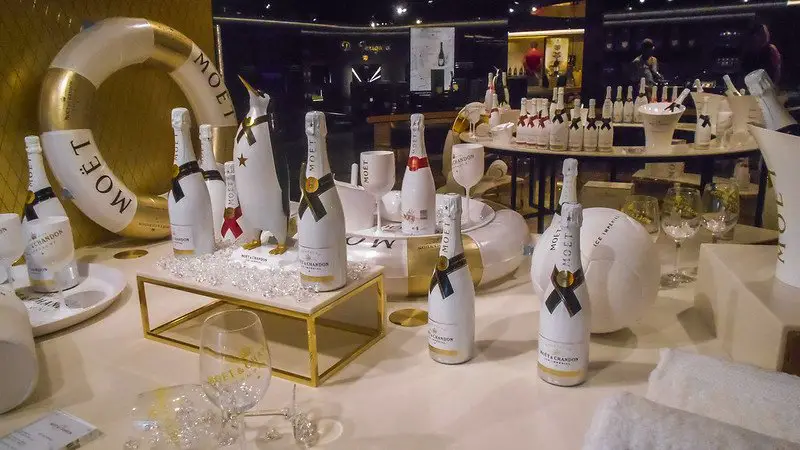
Champagne does what it does really well.
- The packaging.
- The promotional events.
- Bottled elegance.
The marketing costs come out to about ~20% of the total bottle cost you see at the store.
So if you’re paying $100 USD for a bottle of Champagne, you can assume that about $20 goes toward the producer’s marketing budget.
6. Champagne Grapes Must Be Hand Harvested
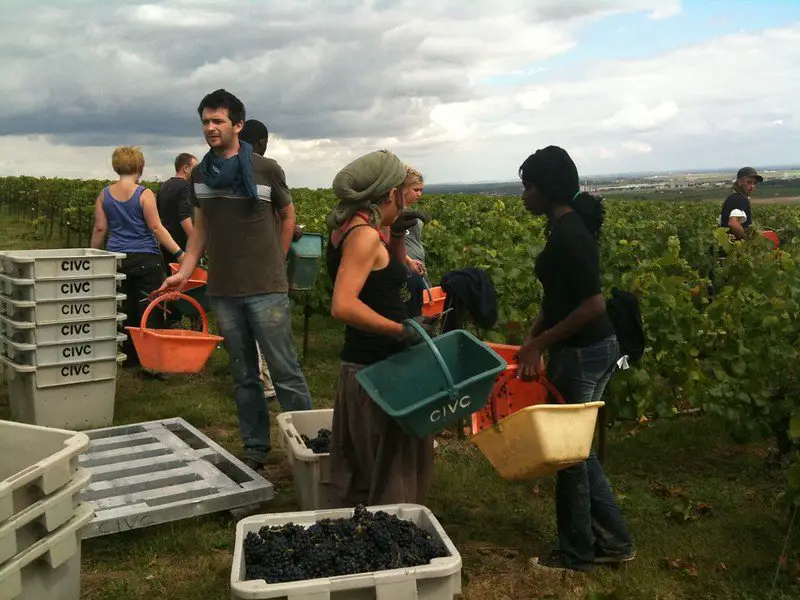
The regulations for Champagne dictate hand harvesting. This requires a huge migratory workforce.
Over 120,000 people come to Champagne to bring in the harvest.
Hand harvesting allows the pickers to do something called ‘field sorting’, or only picking the healthiest grapes, increasing the wine’s final quality.
7. Champagne Is Almost Always a Blend
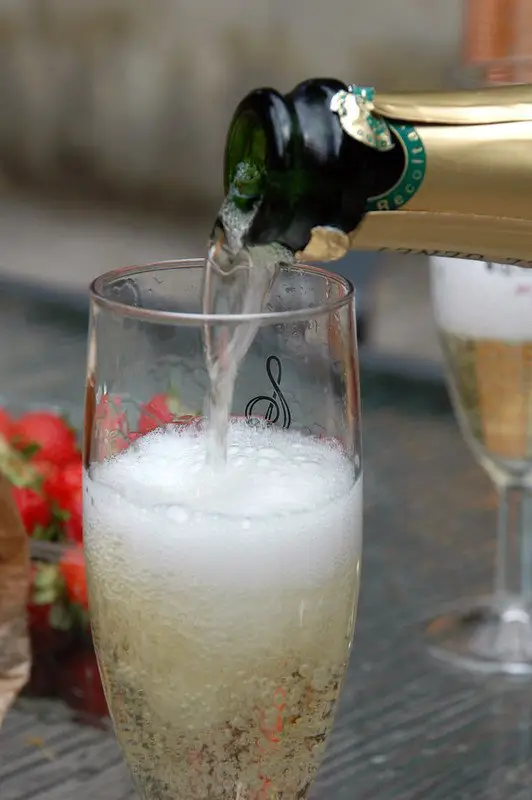
You may think that single-varietal wines are better, but Champagne shines brightest as a symphony, not a solo act.
Due to Champagne’s extreme northerly growing climate, winemakers depend on grapes grown in different vineyard sites with varying levels of sugar and acid to help harmonize their sparkles.
- Grapes from one site may just barely ripen and bring steely acidity to the blend for ageability.
- Grapes from a different site can add sugar and riper fruits to help bring up the alcohol level and balance out the cuvée.
8. Grand Cru in Champagne Refers to an Entire Village, Not a Vineyard
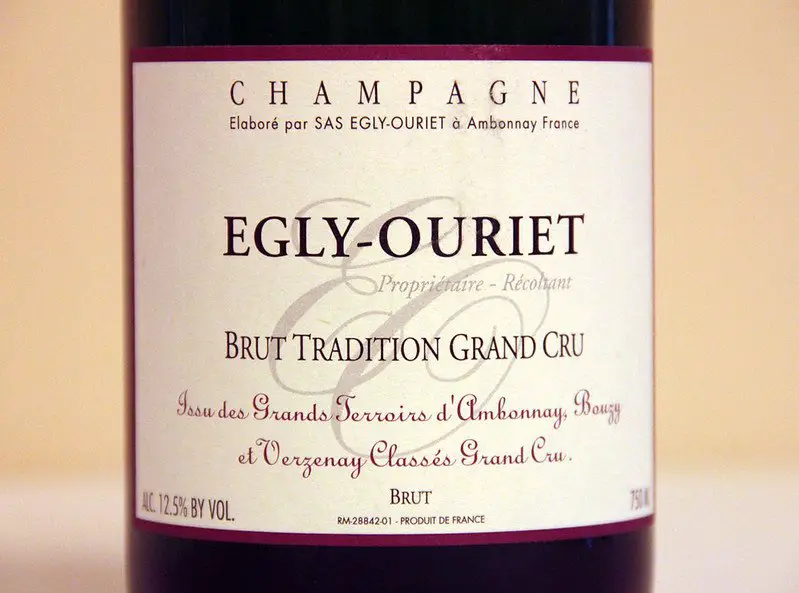
You’ve heard of the term ‘Grand Cru’ and know that it’s a word that means the wine inside your bottle should be of the highest quality.
You’re not wrong.
But unlike in Burgundy where Grand Cru refers to a specific vineyard (and the grapes come from that vineyard), in Champagne a vineyard that qualifies as Grand Cru lends its prestige to the entire village.
So, if you see the word Grand Cru on a Champagne label along with a village name, know that it’s the village, not necessarily the wine.
What’s special about the Grand Cru sites in Champagne?
They sit on chalky soils, which are said to lend finesse and steely acidity to the grapes that will allow a Champagne wine to age for decades.
9. The Comité Champagne Determines How Much Champagne Gets Made Every Year
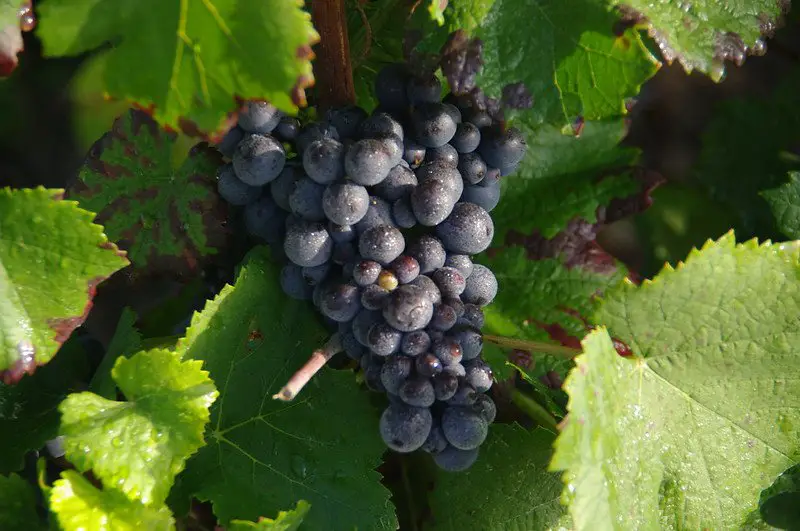
This may seem odd if you come from a more free-wheeling wine-producing region like the US or Australia, but the producers in Champagne actually don’t determine how much wine they can make every year.
The Comité Champagne, the region’s oversight body, sets the limits.
These Champagne gurus look at historical and projected sales in order to set the total volume for that year’s harvest (or vintage).
They also set limits on how much wine producers hold in reserve, called blockage.
The blockage, or reserve wines, get used for blending and can be dipped into when there’s a bad year (poor weather that reduces yields).
The blockage system is what helps Champagne houses producer stylistically similar wines every year in what’s called a ‘house style’.
10. The Chef de Cave Is One of the Most Important People in Champgne’s Winemaking Process
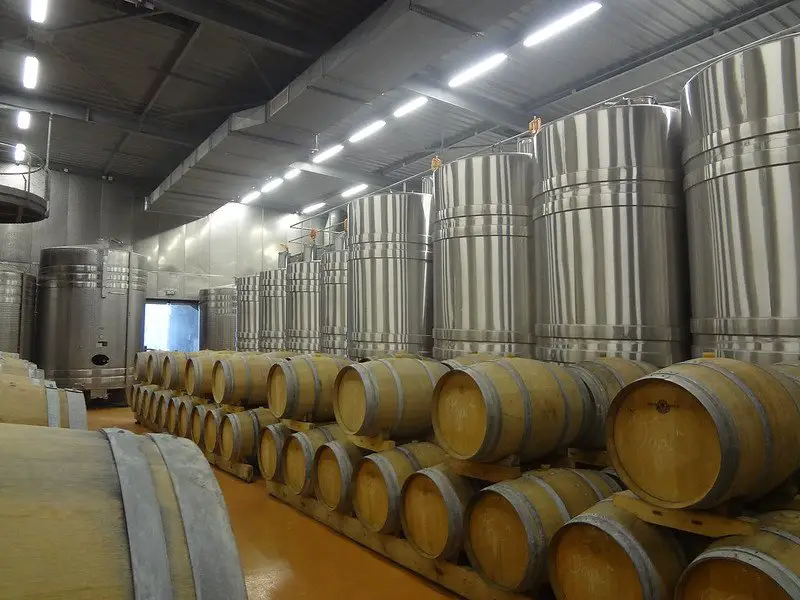
The Chef de Cave, or cellar master, is in charge of the Champagne-making process. This person oversees the wine’s blending and maturation from start to finish.
They are responsible for maintaining the reserve wines in the blocage, and selecting wine from the reserves to mix in with the current vintage.
The Chef de Cave may oversee hundreds of different lots of wine, selecting just the right amounts from this lot or that lot to craft epic, ageable bottles of bubbly.
11. Champagne Corks Must Have the Word ‘Champagne’ Stamped on Them

If you open enough sparking wine, you will notice that those bottles from Champagne have the word ‘Champagne’ stamped on their corks.
This Champagne stamp is a requirement.
It signifies that the bubbles inside the bottle came from Champagne, France.
12. 7 Grape Varieties Can Go Into Champagne

Champagne isn’t a grape, but rather a wine style. And if you’re a wine-lover, you may already be familiar with THE BIG 3 grape varieties permitted in Champagne: Pinot Noir, Chardonnay, and Munier.
Of those 3, Pinot Noir and Chardonnay are the prominent ones.
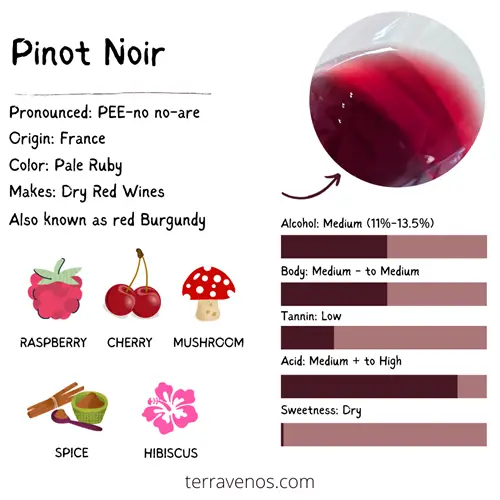
But there are actually 7 varieties allowed in Champagne wines:
- Pinot Noir
- Chardonnay
- Munier
- Pinot Blanc
- Pinot Gris
- Petit Meslier
- Arbane
The vast majority of Champagnes use THE BIG 3, but some producers include the other varieties not just for complexity, but as a part of the marketing scheme.
The Champagne House Moutard-Diligent makes a Cuvée 6 Cépages (Cuvee of 6 grape varieties), in homage to the distinct grapes sourced from the Champagne region. Sweet!
13. Champagne’s Max Alcohol Is 13% ABV
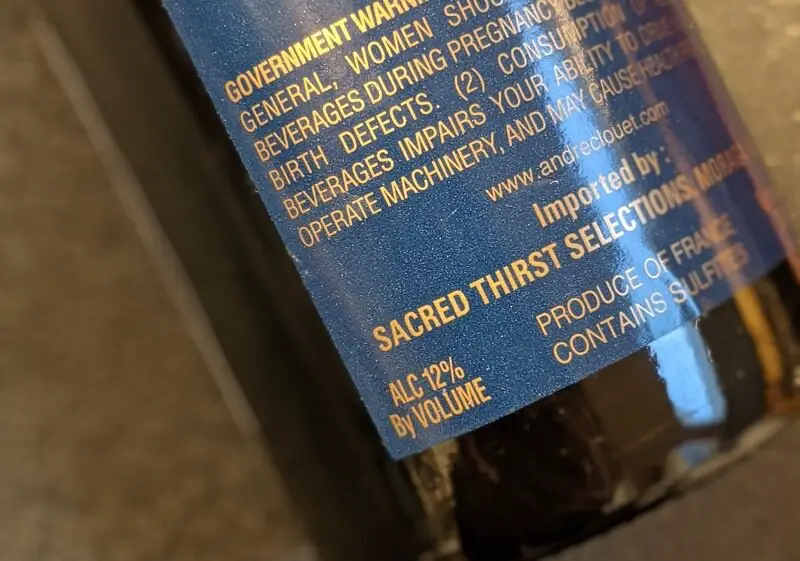
If you’re watching your alcohol intake, then Champagne offers moderation in the glass. By regulation, the maximum alcohol level in Champagne is 13%. In practice, most Champagnes will come in at a respectable 12%-12.5%.
That’s something worth toasting!
14. Champagne Has to Be at Least 15 Months Old to Sell
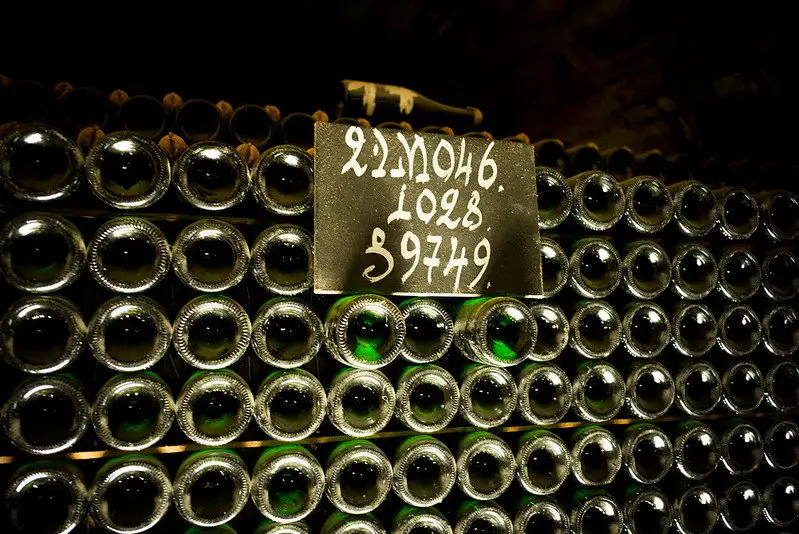
If Champagne were a person, you’d have a walking, talking (sort of) toddler on your hands by the time you could take it home with you.
The region’s aging regulations mean that Champagne needs to mature at the winery for a full 15 months (minimum – even for the cheap stuff) before a producer can release it for sale.
Wines that come from a single vintage (grapes of the same harvest year) have even longer aging requirements, coming in at 36 months.
That’s pre-school age!
These long aging requirements result in a couple of things.
- The wines fully integrate the flavors and bubbles, giving you that joyous mouthfeel with complex toasty brioche notes.
- Added maturation time equates to higher per-bottle production costs than sparkingly wine from regions without these longer aging requirements (think Prosecco or Cava).
15. Most Champagne Houses Don’t Own Vineyards
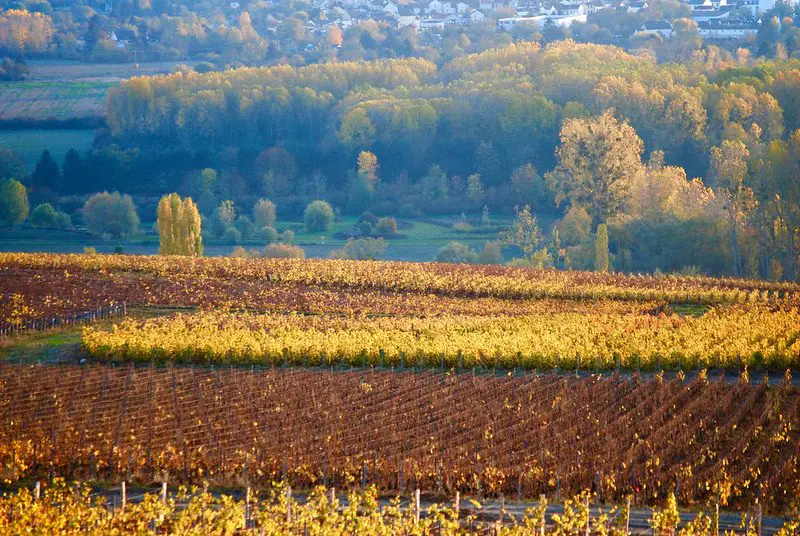
Growing grapes and making wine are two very different enterprises.
The 5 Champagne sub-regions boast over 15,000 independent winegrowers that own 90% of the vineyard land.
These farmers sell their grapes to local cooperatives or the Champagne houses. The cooperative and Champagne houses specialize in turning grape juice into base wine into sparkling wine.
Recently, there’s been an increasing interest in grower-producer Champagnes – wines made by the grape growers themselves. Most of these grower-producer bubbles are sold in-country or at selective specialty wine shops.
So, if you’re looking to try sparkles made by a winegrower, you’ll likely have to go to France or seek out a specialty wine shop.
Fieldtrip anyone?
Thirsty for More?
Check out this post to see how much sugar is in your Champagne wine.
And, because I know you’re thinking it: No, Prosecco isn’t just cheap Champagne.



